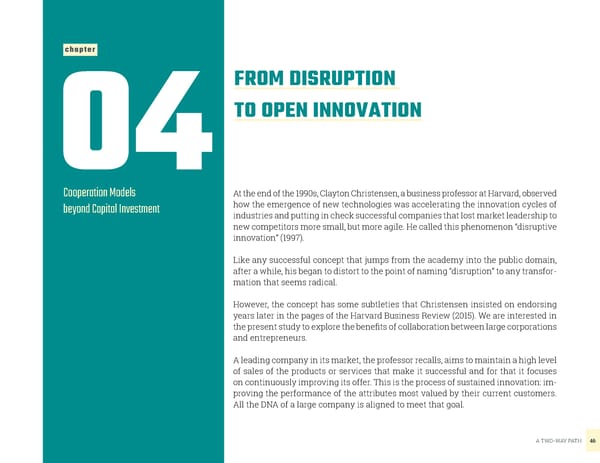chapter FROM DISRUPTION 04TO OPEN INNOVATION Cooperation Models At the end of the 1990s, Clayton Christensen, a business professor at Harvard, observed beyond Capital Investment how the emergence of new technologies was accelerating the innovation cycles of industries and putting in check successful companies that lost market leadership to new competitors more small, but more agile. He called this phenomenon “disruptive innovation” (1997). Like any successful concept that jumps from the academy into the public domain, after a while, his began to distort to the point of naming “disruption” to any transfor- mation that seems radical. However, the concept has some subtleties that Christensen insisted on endorsing years later in the pages of the Harvard Business Review (2015). We are interested in the present study to explore the benefits of collaboration between large corporations and entrepreneurs. A leading company in its market, the professor recalls, aims to maintain a high level of sales of the products or services that make it successful and for that it focuses on continuously improving its offer. This is the process of sustained innovation: im- proving the performance of the attributes most valued by their current customers. All the DNA of a large company is aligned to meet that goal. A TWO-WAY PATH 46
 Fintech in LATAM | EY | Startupbootcamp FinTech | IPADE Page 45 Page 47
Fintech in LATAM | EY | Startupbootcamp FinTech | IPADE Page 45 Page 47